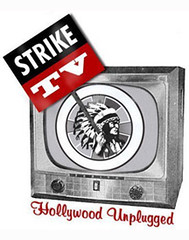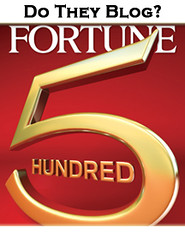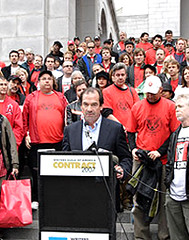Philadelphia Media Holdings, which owns The Philadelphia Inquirer and Philadelphia Daily News, and its advertising agency, Gyro, had a clever idea. They decided to create a campaign for the fictional Derrie-Air airlines with the idea being to test the results of advertising in their print and online products, and “to stimulate discussion on a timely environmental topic of interest to all citizens.”
Philadelphia Media Holdings spokesman Jay Devine added that the goal was to "demonstrate the power of our brands in generating awareness and generating traffic for our advertisers, and put a smile on people's faces."
The campaign, which touts that air travelers will pay by the pound on the new luxury airline, is cute enough to make someone smile. But does it really accomplish any other goal?
Smiles aside, the campaign employs a value proposition that most companies cannot match (for thin people with light carry-ons anyway). And in reality, most offers are not that interesting. Of course it’s easier to gin up interest on fictional claims. Just ask Steorn. So in terms of generating awareness, any numbers will be nothing more than smoke, fire, and flash.
The same might be said about stimulating discussion on a timely environmental topic. Not many, if anyone, is talking or blogging about the environment because of this campaign. They’re simply talking about the campaign, and not even the cost of the paper needed to print it.
So as much as I enjoy something funny now and again, this campaign needs some sales before it can be called a success. For now, it's only real claim to fame seems to be that is made potential customers work harder for a laugh that any real ad could have delivered for better results. Hmmm ... now that's not so funny.

Philadelphia Media Holdings spokesman Jay Devine added that the goal was to "demonstrate the power of our brands in generating awareness and generating traffic for our advertisers, and put a smile on people's faces."
The campaign, which touts that air travelers will pay by the pound on the new luxury airline, is cute enough to make someone smile. But does it really accomplish any other goal?
Smiles aside, the campaign employs a value proposition that most companies cannot match (for thin people with light carry-ons anyway). And in reality, most offers are not that interesting. Of course it’s easier to gin up interest on fictional claims. Just ask Steorn. So in terms of generating awareness, any numbers will be nothing more than smoke, fire, and flash.
The same might be said about stimulating discussion on a timely environmental topic. Not many, if anyone, is talking or blogging about the environment because of this campaign. They’re simply talking about the campaign, and not even the cost of the paper needed to print it.
So as much as I enjoy something funny now and again, this campaign needs some sales before it can be called a success. For now, it's only real claim to fame seems to be that is made potential customers work harder for a laugh that any real ad could have delivered for better results. Hmmm ... now that's not so funny.





























